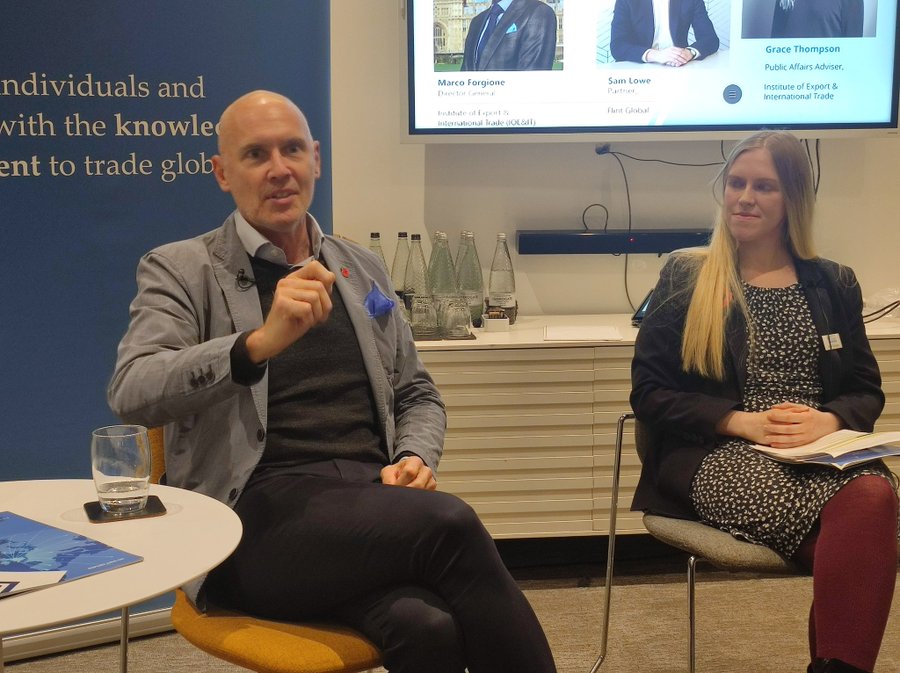The director general of the Institute of Export & International Trade, Marco Forgione, has said that for the UK to achieve its border plans, it will need long-term investment with a government department and minister dedicated to border strategy.
Speaking at the launch of the IOE&IT’s new report, ‘Enhanced Efficiency: Building a UK border fit for the 21st century’, last night, Forgione also said that the strategy should see the UK move from a “hazard approach to one based on risk” for conducting border checks.
Forgione was speaking alongside Sam Lowe, a partner at Flint Global (co-writers of the report), and Grace Thompson, the public affairs advisor at the IOE&IT. The event took place as part of the Department for International Trade’s International Trade Week programme of events and workshops, and was attended by government officials, industry bodies and businesses.
New approach
The UK’s ambition is to have “the most effective border in the world by 2025”. The new report from Flint Global and IOE&IT establishes five key pillars for any strategy the government may implement to reach this:
- Develop new technology and systems
- Introduce a new regulatory framework to encourage modernisation
- Invest heavily in projects delivering on immediate border needs
- A fresh emphasis on border education and ongoing learning
- Cooperation and co-development with other nations
Forgione said, more broadly, that a new approach was needed whereby borders are no longer seen “as an edge or barrier” but instead as a “beginning, an initiation and a start.”
“This paper highlights a number of practical steps that government needs to take to ensure that we have a robust, facilitating border strategy that is fit and relevant not just for today and the 21st century, but for an environment that works in the future,” he said. “This paper looks at how we can create a border that enables and facilitates trade whilst protecting the communities and business in the UK.”
Two takeaways
Forgione told attendees that there were two key takeaways from the report, particularly for government. He said:
“The first takeaway is a plea for the government to have a long-term strategy for the border that provides the sufficient policy support and resources needed to ensure that the border is fit for purpose going into the future.”
“The second is to do with the challenge that there are so many different government departments that are involved in international trade and that have a stake in the border, that the issue becomes hugely fragmented. It becomes difficult to get a sense of how we can create a singularity of ambition around border strategy.
“One of the key asks in the report is that we have a cross-governmental minister for the border who is focused on pulling together all the stakeholders – including businesses and in government – to ensure that we have a border that supports our national ambition to grow our economy by encouraging more businesses to trade overseas.”
How borders fail
Lowe agreed with Forgione about the importance of sustained investment and central government oversight.
“The most important point is that, absent of central government oversight, drive and delivery, the plans for the border will fail,” he said. “We might introduce new technologies to the border but we’ll have the same problems in terms of duplication, things not working well and different systems being used for competing priorities.”
He added that sustained investment would end up paying for itself because of the economic growth that reduced barriers to trade would facilitate.
“You cannot put up some money once and hope that’s the end,” he said. “If you want an effective border that’s world-leading, you have to be constantly investing in it. I use the word investment explicitly because, if you are able to build a border that facilitates trade, that is good for the economy and will pay for itself.”
You can read the full report, ‘Enhanced Efficiency: Building a UK border fit for the 21st century’, here.




